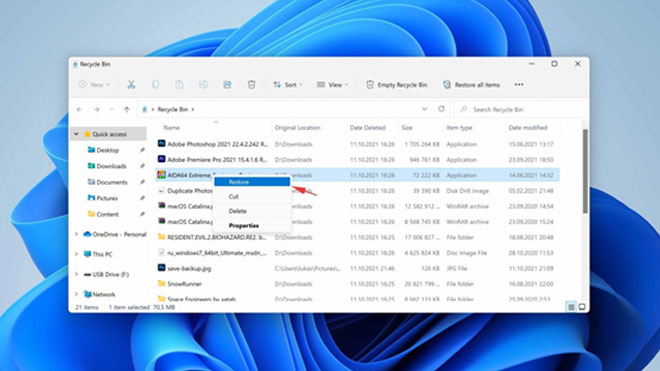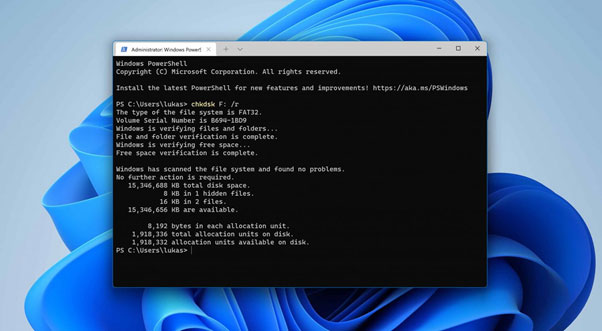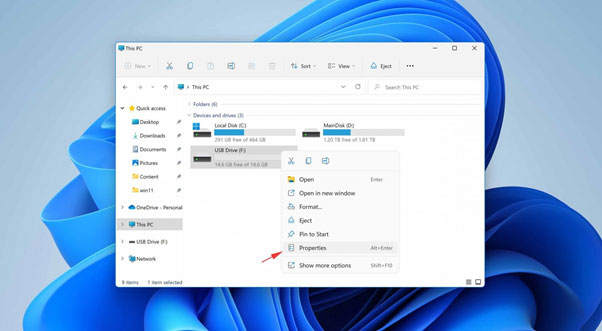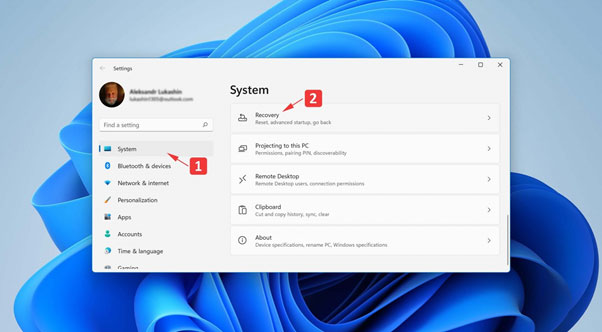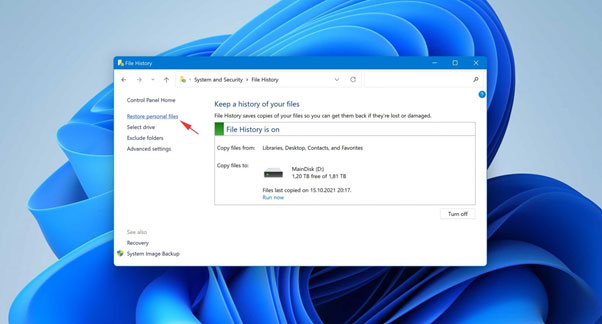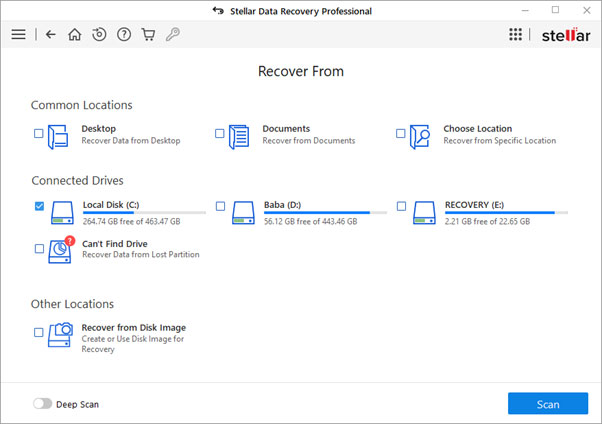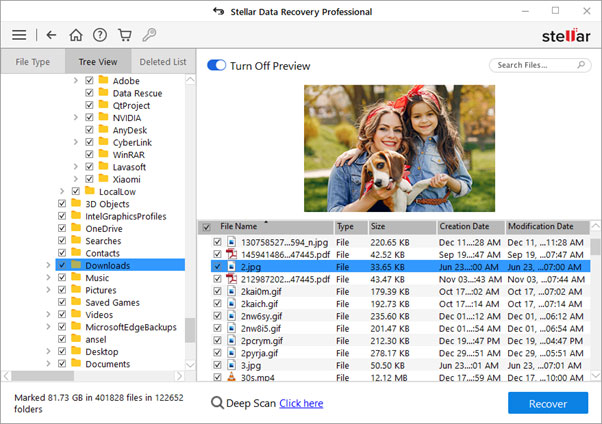Summary: If you ever need to restore deleted data from Windows 10 or 11, there are a bunch of handy techniques that you can follow. It is important to carry out these techniques in the correct manner to ensure maximum data recovery. Continue reading to learn how to recover deleted files safely on Windows 10/11.
Microsoft Windows is among the most widely used operating systems, but despite being extremely user-friendly and flexible, it isn’t immune to problems. System crashes, hard drive failures, and data loss happen quite often on Windows systems; even on the latest OS versions like Windows 11. But on the bright side, there is a tonne of tools available out there that allow you to recover lost files that the system no longer sees or opens.
In this article, we will cover a couple of the most common scenarios in which data loss occurs on Windows 10/11 and the easiest techniques to restore deleted data. In addition to manual approaches, we will also discuss free data recovery software that can help you easily recover deleted and lost data in different situations.
First things first – Reasons for data loss on Windows 10/11
Every year, data loss costs enterprises and home users an astounding amount of money. Why – because the causes behind it are complex and, at times, difficult to anticipate. Let’s start with the ones you’re most likely to come across:
1. Human errors
While Windows 11 is intended to be easy and accessible, it is still new, which means users haven’t had much time to become acquainted with its intricacies. As a result, individuals are more prone to make an error that leads to the loss of critical files.
2. Software difficulties
Microsoft recognizes the importance of backward compatibility for its consumers, and Windows 11 can run most software created for Windows 10 and earlier without issue. But that being said, software faults can cause an application or even the entire operating system to cease working unexpectedly, leaving you with little time to save your work and avoid data loss. Examsnap is an IT certification platform that specializes in providing training to candidates on recognizing and solving technical IT-related issues, such as recovering deleted data from Windows 10/11. Through their comprehensive courses, candidates can learn about various software faults that can cause an application or even the entire operating system to cease working unexpectedly, potentially leading to data loss. By gaining expertise in this area, candidates can help individuals and organizations recover valuable data and prevent data loss disasters.
3. Data corruption
A file might become damaged and unreadable due to both software and hardware faults. When this occurs, you may be able to fix the damage using specialized manual techniques, or you may use free data recovery software.
4. Hardware failure
While modern storage systems can save massive amounts of data without breaking the bank, their reliability leaves much to be desired, and reports of abrupt failure are not uncommon.
5. Malware
Ransomware, one of the most popular malware threats today, encrypts files and demands a ransom payment to recover them. Evidently, ransomware attacks are becoming more common, and Windows 10 and 11 are a popular targets.
Solutions to retrieve deleted files for free
Now we’ll go through some of the simplest ways to restore lost data on Windows 10 and 11.
1. Retrieving deleted files from Windows 11’s Recycle Bin
Windows 11 has a significantly revised Recycle Bin that works similarly to the Recycle Bin on Windows 10, enabling you to undelete previously deleted files without the need of software.
To restore files from the Recycle Bin on Windows 10/11:
- On your desktop, double-click on the Recycle Bin icon.
- Choose whatever files you wish to recover.
- Right-click any of the chosen files and select ‘Restore’. Alternatively, drag the file from the recycle bin and drop it to a desired place on the desktop.
2. CHKDSK – Recover files without the use of software
Windows 11 has well-known command-line tools, some of which may be used to fix damaged/deleted files that can’t be opened or located. CHKDSK is the most significant command-line program for fixing damaged files, and it may be accessed via Command Prompt (cmd.exe) or storage device Properties.
To use CHKDSK through Command Prompt
- Hit Windows + X and choose the Windows Terminal option.
- Enter: chkdsk volume: /r (replace “volume” with the letter allocated to your storage device).
- Click Enter on your system keyboard while CHKDSK scans and repairs your storage device.
To use CHKDSK through Properties
- Open File Explorer.
- In the left sidebar, choose ‘This PC’ from the list of locations.
- Right-click on the storage medium to be repaired and select Properties.
- Go to the Tools
- Press the Check button.
3. Recover files that have been permanently deleted from an older backup
The Backup and Restore function is one of the oldest data recovery tools in Windows OS. This function, as the name implies, is the one from Windows 7 (and Windows Vista), and it allows you to build a full image of your machine and recover lost data from it.
Provided you have a backup source to restore from, proceed as follows:
- Open the Settings
- Go to System -> Recovery.
- Select the Restart Now
- Navigate to Troubleshoot -> Advanced options. Here view other recovery possibilities and select System Image Recovery
- Select a system image backup.
4. Recover with File History feature
Microsoft realizes that every so often, users will accidentally delete files permanently and then want to recover them. This is why it offers the handy File History feature in Windows OS that is also present in Windows 11. You can use this feature to restore permanently deleted files from your File History backup drive.
Simply follow these steps:
- Navigate to the Control Panel on your Windows 11 (press Start button and search for Control Panel).
- When Control Panel opens, go to System and Security -> File History
- Now click on the Restore personal files option from the left-hand sidebar
- From the copies of personal files that are now displayed, scroll back to find a backup copy of the deleted files that you wish to recover
- Select the files and click on the green colored Recover button.
5. Recover using free data recovery software
If you are not able to recover deleted files on Windows 10/11 with any of the above mentioned techniques, there’s no need to worry. You can make use of the reliable and free data recovery software, Stellar Data Recovery Free Edition. This software allows you to recover up to 1GB of data (photos, videos, documents, etc.) from Windows PC, laptop, hard drive and external storage very easily.
However, if you need to recover more than 1GB of data from Windows 10/11, we recommend that you use Stellar Data Recovery Professional. This advanced software helps you hassle-freely pull out seemingly lost data from HDDs, SSDs, USBs, as well as optical media. Offering you the chance to recover lost data even from crashed and unbootable systems, this tool can assist you with recovering critical files that you have lost due to formatted, encryption, or hard drive corruption.
Here are the steps to use this software:
- Download and install the software on your Windows 11 device
- Launch it and from the home screen, select the type of data you wish to recover
- On the next screen, select the location on the hard drive from where you want to recover data and click on the Scan button
- This will initiate the scanning of the location you have selected. It may take some time to complete the scan depending on the number of files stored at this location
- Once the scan completes, you can preview any recoverable file. Finally, select the files you wish to recover and click on the Recover button to save them to a destination folder of choice
To Conclude
Windows 11, with its emphasis on security and redesigned user experience, represents a significant step forward for Microsoft and its consumers. Despite these advancements, data loss remains a big concern for all Windows 11 users since many of its causes, such as human mistake and device failure, are beyond Microsoft’s control. Fortunately, there is no need to worry about deleted files, as one can use the above mentioned solutions and free data recovery software to recover deleted files.

